Themed collection 2024 Journal of Materials Chemistry A Lunar New Year collection

Advances in harvesting water and energy from ubiquitous atmospheric moisture
Sorbent-assisted AWH and moisture-enabled energy generation are reviewed in parallel to reveal the correlation between these two technologies.

J. Mater. Chem. A, 2023,11, 12456-12481
https://doi.org/10.1039/D2TA09552A
Versatile carbon superstructures for energy storage
The design strategies and underlying mechanisms of versatile carbon superstructures for energy storage are reviewed. Current challenges and development roadmaps are proposed to spur the further exploration of carbon superstructures.

J. Mater. Chem. A, 2023,11, 12434-12455
https://doi.org/10.1039/D2TA09258A
Highly selective semiconductor photocatalysis for CO2 reduction
Herein, to provide ideas for the design of highly selective CO2 reduction materials, we introduce each step of the photocatalytic CO2 reduction process and summarize how each step is adjusted to promote the selectivity of CO2 reduction.

J. Mater. Chem. A, 2023,11, 12539-12558
https://doi.org/10.1039/D2TA09234D
Recent advances in modified commercial separators for lithium–sulfur batteries
Lithium–sulfur batteries (LSBs) are one of the most promising next-generation batteries because they have higher theoretical capacities, lower cost, and smaller environmental impact than lithium-ion batteries (LIBs).

J. Mater. Chem. A, 2023,11, 7833-7866
https://doi.org/10.1039/D2TA09266B
Manganese-based oxide electrocatalysts for the oxygen evolution reaction: a review
The oxygen evolution reaction (OER), as an essential process in water decomposition and air batteries, has received increasing attention in the context of clean energy production and efficient energy storage.

J. Mater. Chem. A, 2023,11, 5476-5494
https://doi.org/10.1039/D2TA09039B
Research progress on the construction of synergistic electrocatalytic ORR/OER self-supporting cathodes for zinc–air batteries
The synthetic strategies, application and future development of non-precious metal-based self-supporting electrodes for Zn–air batteries have been systematically summarized according to the recent research progress.

J. Mater. Chem. A, 2023,11, 4400-4427
https://doi.org/10.1039/D2TA09626A
Advanced oxygen evolution reaction catalysts for solar-driven photoelectrochemical water splitting
Herein, we summarize the recent developments in structure optimizations of oxygen evolution reaction catalysts for promoting photoelectrochemical water splitting performances.

J. Mater. Chem. A, 2023,11, 3888-3903
https://doi.org/10.1039/D2TA09479G
Recent advances in metal-free covalent organic frameworks for photocatalytic applications in energy and environmental fields
A review on metal-free COF photocatalysts from an environmental perspective is presented.

J. Mater. Chem. A, 2023,11, 3245-3261
https://doi.org/10.1039/D2TA09582C
Lignin-derived electrode materials for supercapacitor applications: progress and perspectives
Lignin is one of the most abundant natural polymers and is affordable, has high carbon content and abundant active functional groups. It has been utilized as electrode materials in electrical double-layer supercapacitors and pseudo-supercapacitors.

J. Mater. Chem. A, 2023,11, 1061-1082
https://doi.org/10.1039/D2TA07203C
3D fibrous aerogels from 1D polymer nanofibers for energy and environmental applications
Aerogels are highly porous structures produced by replacing the liquid solvent of a gel with air without causing the collapse of the solid network.

J. Mater. Chem. A, 2023,11, 512-547
https://doi.org/10.1039/D2TA05984C
High-areal-capacity anode-free all-solid-state lithium batteries enabled by interconnected carbon-reinforced ionic-electronic composites
A three-dimensional carbon-reinforced ionic-electronic composite (CRIEC) boosts the cycling areal capacities of working anode-free all-solid-state lithium batteries.

J. Mater. Chem. A, 2023,11, 12713-12718
https://doi.org/10.1039/D3TA00121K
Main-group indium single-atom catalysts for electrocatalytic NO reduction to NH3
In single atoms confined in amorphous MoO3 (In1/a-MoO3) are reported to be an efficient catalyst for NO electroreduction to NH3, attributed to the ability of single-site In to inhibit hydrogen evolution and optimize NO-to-NH3 hydrogenation energetics.
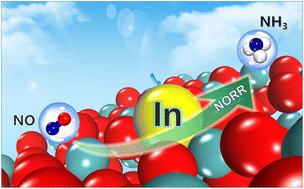
J. Mater. Chem. A, 2023,11, 6814-6819
https://doi.org/10.1039/D3TA00606A
High-efficiency overall alkaline seawater splitting: using a nickel–iron sulfide nanosheet array as a bifunctional electrocatalyst
NiFeS nanosheet array on Ni foam (NiFeS/NF) behaves as a superb bifunctional electrocatalyst for overall seawater splitting, attaining a commercially demanded current density of 500 mA cm−2 at a low cell voltage of 1.85 V with robust stability.

J. Mater. Chem. A, 2023,11, 1116-1122
https://doi.org/10.1039/D2TA08568B
Intrinsically robust cubic MnCoOx solid solution: achieving high activity for sustainable acidic water oxidation
The MnCoOx solid solution catalysts show excellent catalytic efficiency and stability in the acidic OER. The investigation and DFT studies highlight the essential role of Co3+ and Mn4+ cations and oxygen vacancies in the OER mechanism.

J. Mater. Chem. A, 2023,11, 25345-25355
https://doi.org/10.1039/D3TA05233H
Boosted charge transport through Au-modified NiFe layered double hydroxide on silicon for efficient photoelectrochemical water oxidation
Atomically doped Au in NiFe-LDH effectively passivates defect sites, substantially enhancing overall PEC water oxidation properties.

J. Mater. Chem. A, 2023,11, 17503-17513
https://doi.org/10.1039/D3TA03075J
Heteroatom P filling activates intrinsic S atomic sites of few-layered ZnIn2S4via modulation of H adsorption kinetics for sacrificial agent-free photocatalytic hydrogen evolution from pure water and seawater
Kinetic-oriented design of ZnIn2S4via P-filling can modulate the surface activity by diminishing H adsorption–desorption barrier for sacrificial-free H2 evolution.

J. Mater. Chem. A, 2023,11, 17079-17090
https://doi.org/10.1039/D2TA08789H
Exploring low-cost high energy NASICON cathodes for sodium-ion batteries via a combined machine-learning, ab initio, and experimental approach
This study demonstrated the fusion of machine-learning, ab initio, and experimental approaches model to develop new NASICON type cathodes including Na3.5MnV0.5Ti0.5(PO4)3, Na3.5MnV0.5Fe0.5(PO4)3, and Na3.5MnV0.5Al0.5(PO4)3 for SIBs.

J. Mater. Chem. A, 2023,11, 15518-15531
https://doi.org/10.1039/D3TA02291A
Dynamic compensation of MnOOH to mitigate the irregular dissolution of MnO2 in rechargeable aqueous Zn/MnO2 batteries
Ce(SO4)2 was introduced as an electrolyte additive for aqueous zinc batteries. The MnOOH generated in situ in the electrolyte was deposited on MnO2 cathodes and compensated for the influence of disproportionation.

J. Mater. Chem. A, 2023,11, 15211-15218
https://doi.org/10.1039/D3TA02202A
Unprecedented urea oxidation on Zn@Ni-MOF with an ultra-high current density: understanding the competition between UOR and OER, catalytic activity limitation and reaction selectivity
Zn-doping populates the catalytically active Ni3+-OOH sites, and subsequently prevents the detrimental competition between the UOR and OER. Consequently, Zn@Ni-MOF demonstrates an outstanding ultra-high UOR current density.

J. Mater. Chem. A, 2023,11, 14870-14877
https://doi.org/10.1039/D3TA01962D
Selective conversion of CO2 to CH4 enhanced by WO3/In2O3 S-scheme heterojunction photocatalysts with efficient CO2 activation
Novel WO3/In2O3 S-scheme heterojunctions unveiled enhanced CO2 photoreduction performance with ∼53.7% CH4 selectivity, attributing to unique S-scheme charge separation and efficient CO2 activation.
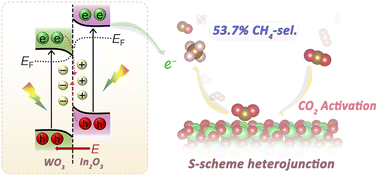
J. Mater. Chem. A, 2023,11, 14860-14869
https://doi.org/10.1039/D3TA02951D
Low-temperature pyrolysis enables FeNi3 nanoparticle implanted N-doped carbon nanosheets as an efficient bifunctional electrocatalyst for overall water splitting
The electrocatalyst FeNi3/NCS was prepared via the low-temperature pyrolysis of the melamine tube@FeNi-LDH heterostructure, which delivered impressive activity and stability towards water splitting with a low cell potential of 1.53 V at 10 mA cm−2.
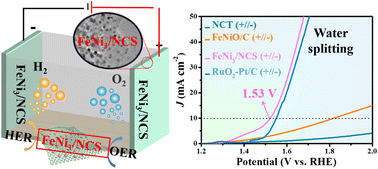
J. Mater. Chem. A, 2023,11, 14015-14024
https://doi.org/10.1039/D3TA01819A
Local microenvironment tuning induces switching between electrochemical CO2 reduction pathways
We show that the pore size of the gas-diffusion layer used in electrochemical CO2 reduction affects CO2 mass transport. This directly influences the local reaction microenvironment, controlling the selectivity between CO and formate on Ag catalysts.

J. Mater. Chem. A, 2023,11, 13493-13501
https://doi.org/10.1039/D3TA02558F
Simultaneously achieving room-temperature circularly polarized luminescence and high stability in chiral perovskite nanocrystals via block copolymer micellar nanoreactors
Perovskite nanocrystals with high chirality and stability were synthesized via chirality transfer from a chiral supramolecular nanoreactor assembled from an achiral block copolymer complexed with racemic alanine.
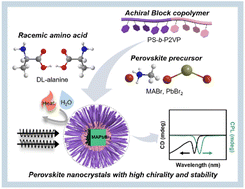
J. Mater. Chem. A, 2023,11, 12876-12884
https://doi.org/10.1039/D2TA06996B
Enlarging the porosity of metal–organic framework-derived carbons for supercapacitor applications by a template-free ethylene glycol etching method
Enlargement of micropores in zeolitic imidazolate framework particles into mesopores is achieved via an ethylene glycol-assisted aqueous etching method. The etched carbon shows a higher specific capacitance than unetched one at high scan rates.
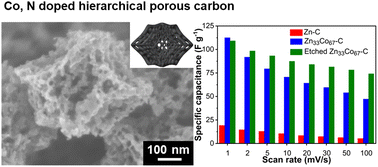
J. Mater. Chem. A, 2023,11, 12759-12769
https://doi.org/10.1039/D2TA06307G
Enhancing the Marangoni flow by inner side chain engineering in nonfullerene acceptors for reproducible blade coating-processed organic solar cell manufacturing
Three nonfullerene acceptors with different inner chain lengths were studied on blade-coated organic solar cells to manipulate the Marangoni flow. Consequently, L8-i-EB, with the shortest inner chain, exhibits homogeneous morphology and performance.

J. Mater. Chem. A, 2023,11, 12185-12193
https://doi.org/10.1039/D3TA01806G
Regulating zinc deposition behaviors by using a functional PANI modification layer on a separator for high performance aqueous zinc-ion batteries
GF/PANI separators were prepared by in situ polymerization of aniline monomers on GF. A PANI layer homogenizes the electric field distribution and induces the uniform deposition of zinc, thereby improving the electrochemical performance of batteries.

J. Mater. Chem. A, 2023,11, 11254-11263
https://doi.org/10.1039/D3TA01344H
Achieving ultralong directional liquid transportation spontaneously with a high velocity
Ultralong and high velocity drop transportation is achieved through the combination of gradient hydrophobic backgrounds and cascaded super-hydrophilic divergent channels.

J. Mater. Chem. A, 2023,11, 10164-10173
https://doi.org/10.1039/D2TA10086J
Enhanced thermoelectric performance in Bi0.5Sb1.5Te3/SiC composites prepared by low-temperature liquid phase sintering
A low-temperature liquid phase sintering method combined with post heat treatment was employed to prepare p-type Bi0.5Sb1.5Te3/SiC composites with enhanced thermoelectric properties.

J. Mater. Chem. A, 2023,11, 8912-8921
https://doi.org/10.1039/D2TA09850D
Solution phase treatments of Sb2Se3 heterojunction photocathodes for improved water splitting performance
The PEC performance of antimony selenide (Sb2Se3) is increased by removing oxide impurities from the surface using (NH4)2S etching solution and passivating dangling bonds with a CuCl2 solution treatment.
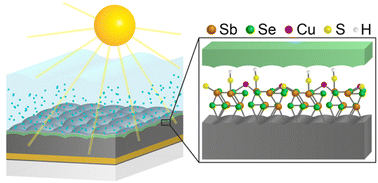
J. Mater. Chem. A, 2023,11, 8277-8284
https://doi.org/10.1039/D3TA00554B
Design and synthesis of a covalent organic framework bridging CdS nanoparticles and a homogeneous cobalt–bipyridine cocatalyst for a highly efficient photocatalytic CO2 reduction
A 2,2′-bipyridine based ketoenamine COF (TpBpy), which can be synthesized by a facile and eco-friendly hydrothermal method, is used to promote CO2 photoreduction processes by bridging CdS nanoparticles and a homogeneous [Co(bpy)3]2+ cocatalyst.

J. Mater. Chem. A, 2023,11, 8392-8403
https://doi.org/10.1039/D3TA00079F
A dual-functional device based on CB/PVDF@BFP for solar-driven water purification and water-induced electricity generation
A dual-functional device to integrate solar-driven water evaporation and evaporation-induced power generation is demonstrated to concurrently produce clean water and green electricity, with the aim to address the inevitable water and energy crises.

J. Mater. Chem. A, 2023,11, 8110-8118
https://doi.org/10.1039/D3TA00032J
A highly permeable porous organic cage composite membrane for gas separation
We proposed a facile porous organic cage (POC) composite membrane fabricated with the RCC3 cage crosslinked by terephthaloyl chloride for CO2/N2 and CH4/N2 separation. The amine-rich subnanochannel provided by RCC3 promoted the rapid penetration of CO2.
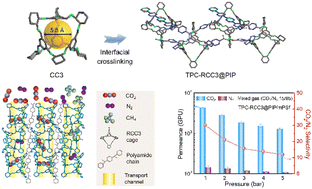
J. Mater. Chem. A, 2023,11, 6831-6841
https://doi.org/10.1039/D2TA09632C
Fe, Cu dual-metal single atom catalyst on commercial carbon black for efficient oxygen reduction reaction
Fe, Cu dual metal single atom catalyst on commercial carbon black exhibited excellent oxygen reduction reaction performance.
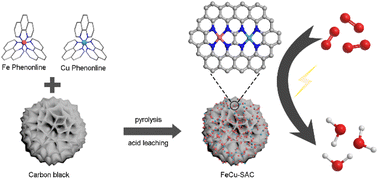
J. Mater. Chem. A, 2023,11, 6191-6197
https://doi.org/10.1039/D2TA09922E
Hierarchically porous Ni foam-supported Co and Sn doped Ni3S2 nanosheets for oxygen evolution reaction electrocatalysts
Electronic structure modification of Ni3S2 with Co and Sn co-doping boosts OER property.

J. Mater. Chem. A, 2023,11, 5734-5745
https://doi.org/10.1039/D2TA09361H
Cationic vacancies and interface engineering on crystalline–amorphous gamma-phase Ni–Co oxyhydroxides achieve ultrahigh mass/areal/volumetric energy density flexible all-solid-state asymmetric supercapacitor
Novel gamma-phase Ni–Co oxyhydroxides nanoplate networks with cationic vacancy defects and crystalline–amorphous interfaces achieve ultrahigh mass/areal/volumetric energy-density flexible all-solid-state asymmetric supercapacitor.

J. Mater. Chem. A, 2023,11, 5754-5765
https://doi.org/10.1039/D2TA09035J
Ti3C2Tx MXene embedded metal–organic framework-based porous electrospun carbon nanofibers as a freestanding electrode for supercapacitors
Ti3C2Tx MXene-integrated porous carbon nanofiber freestanding/flexible electrodes are engineered and the optimized MX-5@PCNF is used for the fabrication of flexible symmetric and asymmetric supercapacitor devices with high energy density.

J. Mater. Chem. A, 2023,11, 5001-5014
https://doi.org/10.1039/D2TA09726E
Extremely high-efficiency solar steam generation, robust and scalable photothermal evaporator based on ZIF-67@MXene/rGO decorated rock wool
For the first-time, recycled RW waste is decorated with a ZIF-67, MXene and reduced graphene oxide as the photothermal evaporator. Solar-thermal conversion efficiency of 153.7% was achieved under 1 sun illumination.
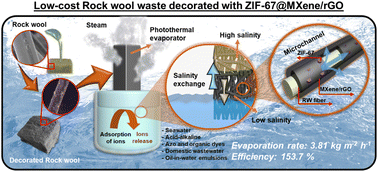
J. Mater. Chem. A, 2023,11, 5296-5308
https://doi.org/10.1039/D2TA09778H
Two-dimensional nanosheets of bimetallic chalcogenide-tagged nitrogen-doped carbon as a cathode for high-performance and durable zinc-ion capacitors
As a cathode in aqueous zinc-ion capacitors (ZICs), nitrogen-doped carbon with a 2D bimetallic chalcogenide (NbMo6S8/NC) was used. The assembled ZIC demonstrated exceptional electrochemical stability and energy efficiency over thousands of charge–discharge cycles.

J. Mater. Chem. A, 2023,11, 5112-5126
https://doi.org/10.1039/D2TA07524E
A multifunctional paper-based supercapacitor with excellent temperature adaptability, plasticity, tensile strength, self-healing, and high thermoelectric effects
In recent years, the development of multi-functional supercapacitors with high flexibility and strong environmental adaptability has gradually become a focus of attention.

J. Mater. Chem. A, 2023,11, 4769-4779
https://doi.org/10.1039/D2TA09654D
Lithium–sulfur cells with a sulfide solid electrolyte/polysulfide cathode interface
A lithium/sulfide/polysulfide cell design with a solid-state sulfide electrolyte and a polysulfide cathode shows a liquid–solid interface with a fast charge-transfer path, high polysulfide retention, and smooth lithium-ion diffusion.

J. Mater. Chem. A, 2023,11, 4519-4526
https://doi.org/10.1039/D2TA07806F
Stability and efficiency improvement of perovskite solar cells by surface hydroxyl defect passivation of SnO2 layer with 4-fluorothiophenol
Chemical bath-deposited SnO2 widely used as an electron transport layer has hydroxyl defect, which is responsible for degradation of perovskite solar cell. Surface passivation of SnO2 with 4-fluorothiophenol improves stability.

J. Mater. Chem. A, 2023,11, 3673-3681
https://doi.org/10.1039/D2TA08488K
Red emissive carbon dots as a fluorescent sensor for fast specific monitoring and imaging of polarity in living cells
This work presents red emissive CDs as a promising fluorescent sensor with excellent photostability, high fluorescence quantum yield, and negligible cytotoxicity for real-time sensing and visualizing polarity changes in mitochondria and lysosomes.

J. Mater. Chem. A, 2023,11, 2679-2689
https://doi.org/10.1039/D2TA09462B
High-voltage deprotonation of layered-type materials as a newly identified cause of electrode degradation
Herein, we report the transition metal dependent deprotonation of layered type materials during their high voltage (>4.5 V vs. Li/Li+) operation as a potential degradation cause in an electrochemical system.

J. Mater. Chem. A, 2023,11, 3018-3027
https://doi.org/10.1039/D2TA07496F
Heteroatomic interface engineering of an octahedron VSe2–ZrO2/C/MXene composite derived from a MXene-MOF hybrid as a superior-performance anode for lithium-ion batteries
The VSe2–ZrO2/C/MXene composite derived from a MXene-MOF hybrid with excellent cycling stability and high reversible capacity exhibited satisfying lithium-ion storage performancedde.

J. Mater. Chem. A, 2023,11, 2836-2847
https://doi.org/10.1039/D2TA09043K
Enhancing energy storage performance in Na0.5Bi0.5TiO3-based lead-free relaxor ferroelectric ceramics along a stepwise optimization route
A stepwise optimization route yields a general way to design synthetic ESP ceramics. NBT-BST-BMS-VPP ceramics obtain an ultrahigh Wrec of 7.5 J cm−3 under 440 kV cm−1.
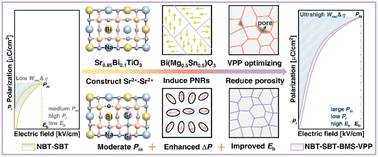
J. Mater. Chem. A, 2023,11, 2641-2651
https://doi.org/10.1039/D2TA09395B
Photothermal-coupled solar photocatalytic CO2 reduction with high efficiency and selectivity on a MoO3−x@ZnIn2S4 core–shell S-scheme heterojunction
An S-scheme heterojunction of core–shell MoO3−x@ZnIn2S4 is first constructed for photothermal-coupled solar photocatalytic CO2 reduction with high efficiency and selectivity.

J. Mater. Chem. A, 2023,11, 2178-2190
https://doi.org/10.1039/D2TA09255G
Effects of hydrophobic side chains in poly(fluorenyl-co-aryl piperidinium) ionomers for durable anion exchange membrane fuel cells
Hydrophobic side chain grafted poly(fluorenyl-co-aryl piperidinium) ionomers simultaneously possess outstanding peak power density of 2.6 W cm−2 at 80 °C along with durable in situ stability of 0.4 mV h−1 voltage decay rate under 0.6 A cm−2 at 70 °C.

J. Mater. Chem. A, 2023,11, 2031-2041
https://doi.org/10.1039/D2TA08726J
Catalytic active centers beyond transition metals: atomically dispersed alkaline-earth metals for the electroreduction of nitrate to ammonia
Taking an alkaline-earth (AE) metal single-atom catalyst supported on graphene as the representative, the feasibility of AE metals as active centers for the electrocatalytic nitrate reduction reaction to produce NH3 has been theoretically explored.

J. Mater. Chem. A, 2023,11, 1817-1828
https://doi.org/10.1039/D2TA08027C
Why does water in porous carbon generate electricity? Electrokinetic role of protons in a water droplet-induced hydrovoltaic system of hydrophilic porous carbon
The comprehensive multiphysics theoretical model on hydrovoltaics shows that the asymmetric protonation gradient and electrokinetic dynamics are the key factors for the mysterious electricity generation of porous carbons.

J. Mater. Chem. A, 2023,11, 1148-1158
https://doi.org/10.1039/D2TA05281D
Rational design of a phenothiazine-based donor–acceptor covalent organic framework for enhanced photocatalytic oxidative coupling of amines and cyclization of thioamides
A PTZ-based D–A COF with low exciton binding energy and high charge separation efficiency exhibited an enhanced photocatalytic performance in oxidative amine coupling and cyclization of thioamide reactions.

J. Mater. Chem. A, 2023,11, 1208-1215
https://doi.org/10.1039/D2TA07177K
About this collection
To mark the Lunar New Year, this web collection features the top 50 most popular articles published in Journal of Materials Chemistry A in 2023 by corresponding authors based in countries celebrating Lunar New Year.
Congratulations to all of the authors whose articles have been featured!